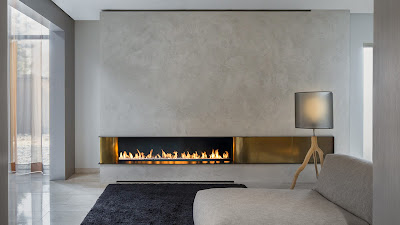When you're looking to have an artificial fireplace installed or upgraded, there are many factors to consider. There are many types of artificial fireplaces: in addition to bio ethanol fireplaces, there are bio gel fireplaces, butane fireplaces, natural gas fireplaces, and acetylene fireplaces. Some of the most important factors when choosing which type of artificial fireplace is right for your are energy efficiency, heat production, installation costs, and operating costs. On all of these metrics, bio ethanol fireplaces come out on top. Here's why:
1. Bio ethanol is clean burning
Bio ethanol is a very simple molecule that is identical to the ethanol found in alcoholic beverages what this means is that when ethanol is burned, the only products of the combustion reaction are heat, carbon dioxide, and water in the form of steam. Since all of these products are nontoxic, unlike other compounds like carbon monoxide that some fires produce, bio ethanol fireplaces do not have to be vented to the outdoors and can be operated in a closed environment. This provides a cost savings during installation as well as during operation.
2. Bio ethanol is nontoxic
In addition to avoiding the production of toxic byproducts, bio ethanol itself is a nontoxic substance. This means that you don't have to worry about your kids and family breathing in toxic gases if there is a breach in the bio ethanol storage container or fuel line.
3. Bio ethanol is cheap and produces a traditional flame
Since bio ethanol is used as a gasoline additive in large quantities, it is very inexpensive to purchase for the operation of your fireplace. In addition to that, the flame produced when bio ethanol burns has a very traditional appearance and is easily controllable, which improves the aesthetics of your fireplace area.
